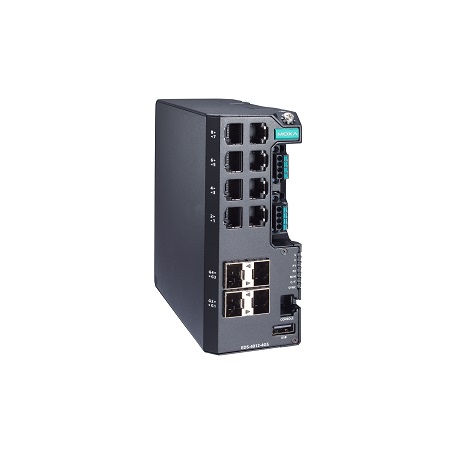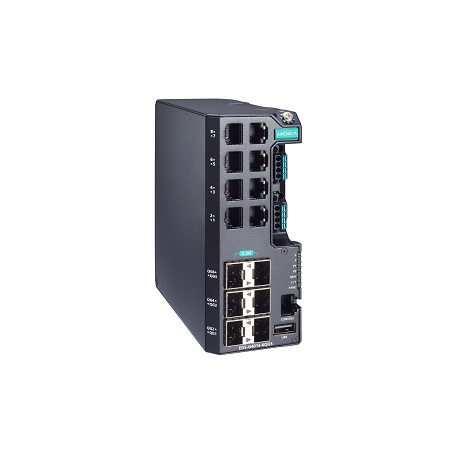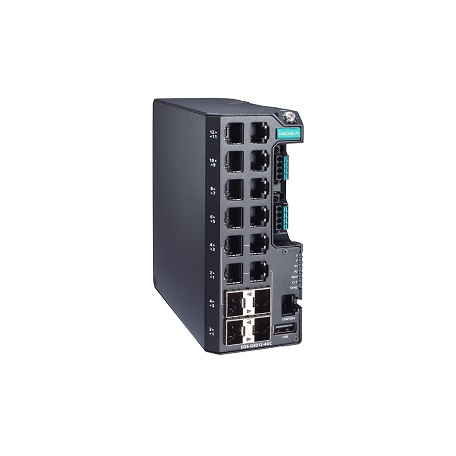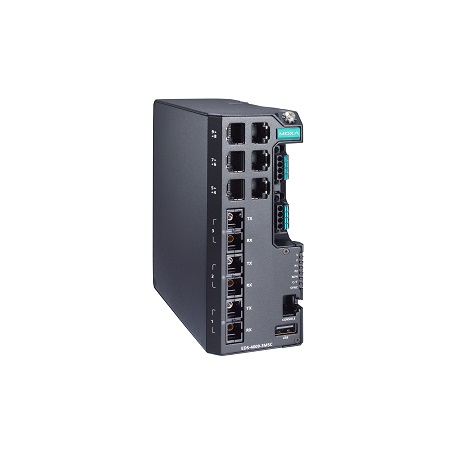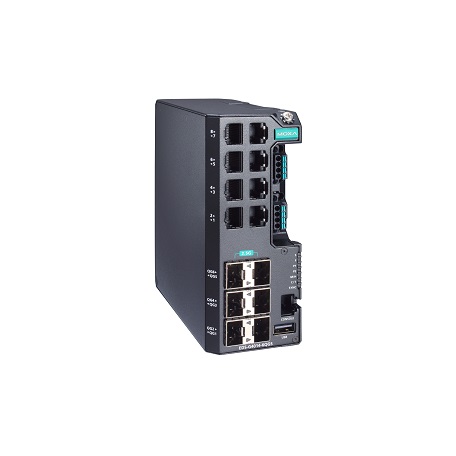
With the trend towards Industry 4.0 and IIoT transformation in
full swing, the increasing demand for network nodes to enable
connected systems has become inevitable. Although some network
nodes can use unmanaged switches that feature basic managed
functions to minimize network complexity and administration effort,
other situations may still require managed switches, which continue
to play an important role in large-scale integrated networks. Your
managed switches need to be smarter and more versatile than
before to adapt to new changes and ensure that data can be
delivered to the right place at the right time. Here, we look at three
key criteria to help you identify a suitable managed switch for
modern automation.
Key Question
Digital transformation relies on reliable networks to maintain system uptime and reduce risks and errors. Are your current managed switches powerful enough to take the heat?
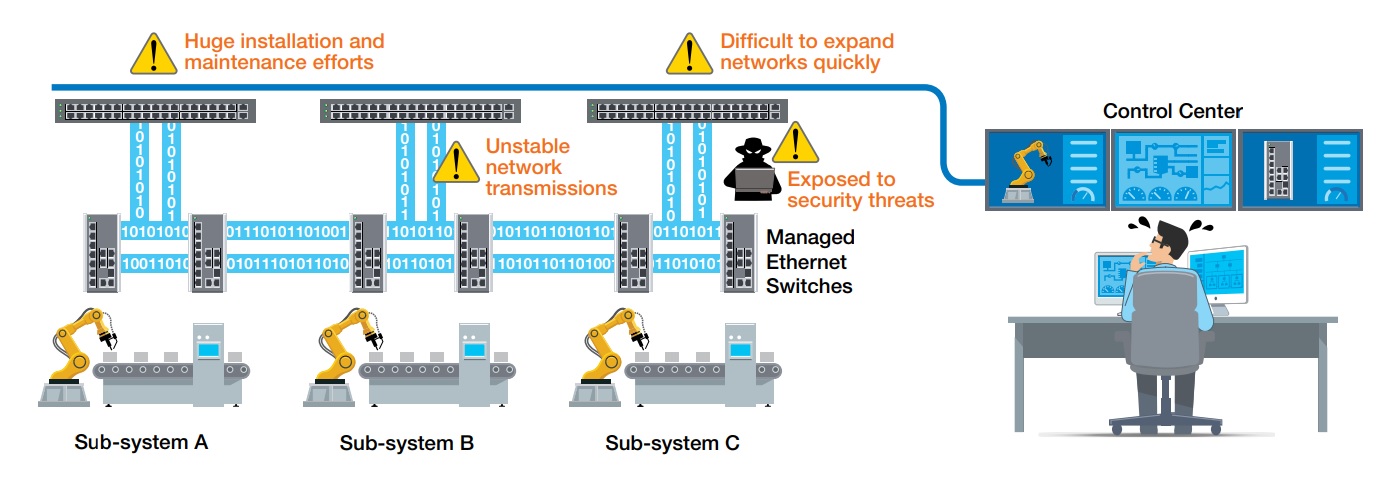
- Key Criteria 1: Easy to Use, Easy to Operate
Good usability is essential for any networking solution. What makes this more critical than ever for industrial automation is the large number of network nodes that appear on a single industrial network. From installation to daily operation and maintenance, the following managed switch functions can help keep things manageable.
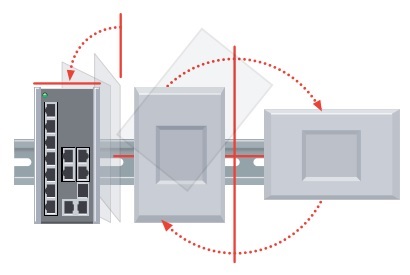
Various Mounting Options Simplify Installation
Each node may have different requirements depending on where it is installed. Having various mounting options can make installation easy.
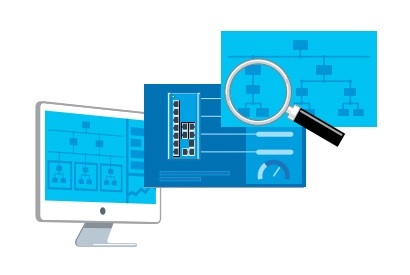
A Glimpse at the Network Status
Tracking the status of network nodes is just one of the hundreds of tasks engineers need to juggle. Choosing managed switches that have user-friendly interfaces allows you to quickly check the status and make changes easily.
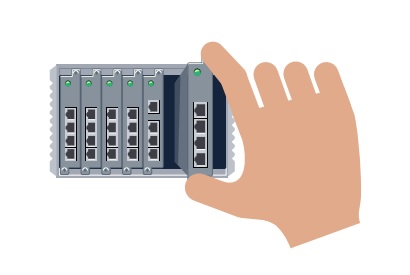
Easy-to-maintain, hot-swappable Design
Device maintenance is unavoidable. Choosing a modular managed switch allows you to hot swap a power or line module during routine maintenance without affecting overall operations.
- Key Criteria 2: Ready to Scale
As with unmanaged switches, when choosing a managed switch, you must consider future network expansion. However, instead of looking for a compact and high-port density solution, we recommend choosing a modular design to save time on installing additional systems when the need arises. Another consideration is the location of your connected systems. This might not be an issue when you enable connected systems within a single factory. But what if your project includes multiple factories or facilities in different places? For highly distributed networks, managed switches that support optical fiber transmissions can ensure reliable data transmissions across vast distances. Indeed, environmental limitations can make networks difficult to connect. Although wired cabling options still have their benefits, you may also need to consider wireless networks as an alternative in hard-to-wire applications.
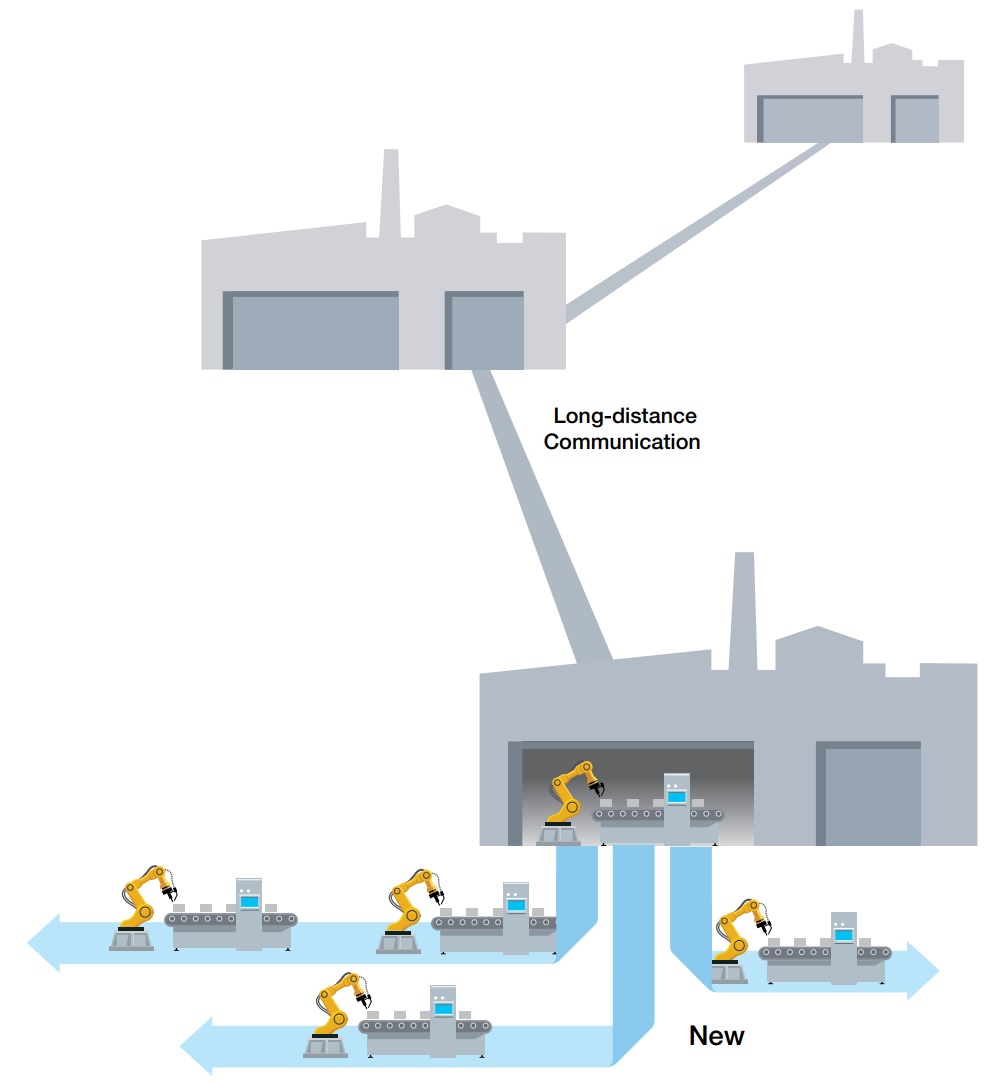
- Key Criteria 3: It’s All About Availability and Security
Connecting industrial systems substantially increases network complexity and can affect your day-to-day operations. Any single point of failure can cause network downtime, and critical data can be lost or tampered with. To avoid network node failures, your managed switches need redundant mechanisms and security functions.
- Redundant Mechanisms
Turbo Ring/Turbo Chain is an advanced function we have seen on managed switches. The idea is to prevent critical data loss if a network node fails. A redundant backup path can be enabled to bypass the failed node and recover the data transmission within seconds or even faster.
- Security Functions
Another potential risk for increasing the number of network nodes and connectivity is greater exposure to unauthorized access and vulnerabilities. Security concerns should not be overlooked, so we suggest choosing networking devices with security features based on the IEC 62443 standard to protect your network node from unwanted access. For additional peace of mind, you may even want to choose a vendor that has its own cybersecurity response team to ensure networking devices are protected from any vulnerabilities.
Moxa has developed a new series of industrial managed Ethernet switches, the EDS-4000/G4000 Series, with IEC 62443-4- 2 certification and rotatable power module design that provide optimal security, usability, reliability, and network performance for any industrial applications.
Conclusion
The key to developing reliable networks is a powerful managed Ethernet switch that is scalable, easy to use, and capable of keeping your data transmissions on time and secure.
Easy World's Moxa's official distributor in the Middle East. For any further information, please contact us via sales@eworldme.com.

